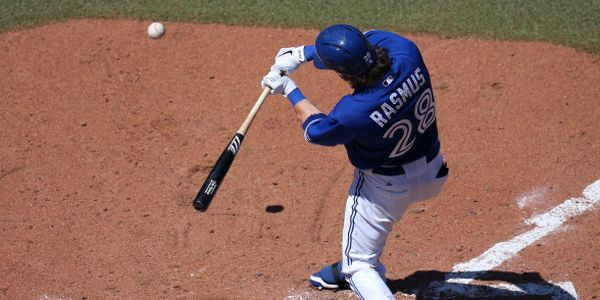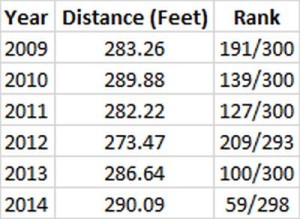2015 Fantasy Baseball: Colby Rasmus to the Astros

On Tuesday Colby Rasmus signed a one-year deal with the Astros worth $8 million, and he’ll immediately be asked to fill the center field void created by dealing Dexter Fowler (colleague David Wiers covered the fantasy ramifications for Fowler here). Rasmus becomes yet another power hitter with high strikeout totals in an Astros lineup not lacking players with that profile. The club will be hoping Rasmus resembles the 2013 version that was able to be a well above average offensive player despite piling up punch outs, but what should fantasy gamers expect?
The 28-year old outfielder’s career has been one plagued by inconsistency. Overall he’s totaled a career triple slash line of .246/.313/.438. In 376 plate appearances last year, Rasmus hit just .225/.287/.448 with 18 homers and four stolen bases. Not the follow up to a stellar 2013 in which he hit .276/.338/.501 with 22 homers in 458 plate appearances that the Blue Jays were hoping for. His 2013 batting average was aided by a .356 BABIP, but his nose dive last year wasn’t simply the result of his BABIP falling to .294 (which is nearly his career mark of .298). The more concerning issue that plagued Rasmus last year than his BABIP normalization was a sky high 33.0% strikeout rate, well above his career rate of 25.2%.
A cursory glance over his plate discipline numbers at FanGraphs tells the story as to why his strikeout rate ballooned. The center fielder posted his highest O-Swing% of his career at 33.1% while also posting the lowest O-Contact% of his career at 49.7%. To better put those rates in perspective, Rasmus has a 29.8% O-Swing% for his career and 56.3% O-Contact%, and the league averages last year were 31.3% and 65.9% respectively. The result was an ugly 69.8% contact rate, well below the league average of 79.4% and his career rate of 75.4%. His contact rate on pitches in the strike zone has been very static year-to-year since 2012 with rates of 84.9% that year, 84.7% in 2013, and 84.1% in 2014. I don’t often like to speculate, but considering it was a walk year for Rasmus, it’s entirely possible he was pressing to impress last year, and with others nipping at his heels for playing time (and ultimately unseating him as the starter by year’s end), pressure never lessened as the year went on. He won’t need to demonstrate Zen like patience to reduce his strikeout rate below the 30% threshold, and I fully expect him to strikeout at a lower rate than that. Something like his 29.5% strikeout rate of 2013 is a fully reasonable expectation, and minus the BABIP luck he benefited from that season, a .240-ish batting is within reach.
That’s not a batting average to right home about, but it’s palatable with the above average power that Rasmus brings to the table. Since reaching the majors in 2009, the former Cardinal has exceeded 20 homers in three seasons. Failing to reach 450 plate appearances for the first time since getting to the Show is the only thing that prevented him from making it four seasons of 20-plus homers in his career. Not only is his power real, but it could be on the rise.
Baseball Heat Maps has a leaderboard for home run and flyball average distance, and it is a much better tool for gauging a player’s power than their average home run distance. Below is a table showing his average distance year-to-year since reaching the majors as well as his rank.
Last year Rasmus set a new career high in average home run and flyball batted ball distance, one year after posting the second highest mark of his career. It shouldn’t come as a shocker that a player is hitting the ball farther in his late-20s than as a physically maturing young major leaguer in his early-to-mid-20s. Thankfully for Rasmus, his power won’t have a significant bite taken out of it changing home ballparks. Stat Corner uses a rolling three year average for their ballpark data and credits the Rogers Centre with a 125 left-handed batter home run factor while Minute Maid Park has a 120 left-handed batter home run factor. An improved Astros lineup should provide run production potential from top to bottom, and that’s good for Rasmus as he’ll probably slot somewhere in the bottom third of the order. He’ll make for a cheap draft day power option that will look nice on in a utility spot or fifth outfielder spot in 12-team mixed leagues or larger, and that obviously puts him firmly in play in AL-only leagues as well.






